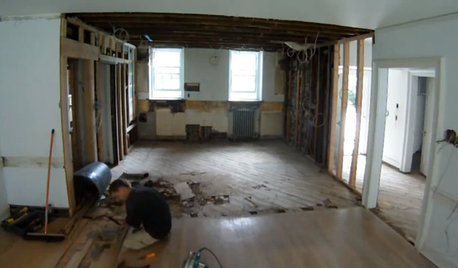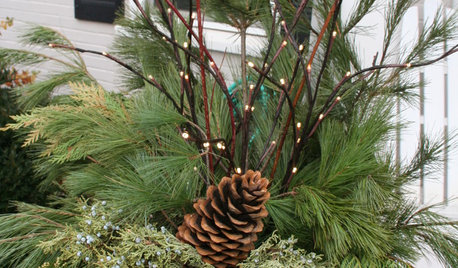Five minute film
soonergrandmom
9 years ago
Related Stories

DECORATING GUIDESLast-Minute Dorm Decorating Guide, Part I
See how to make your college dorm room go urban-modern or prep with 5 easy pieces
Full Story
REMODELING GUIDESWatch an Entire Kitchen Remodel in 3½ Minutes
Zip through from the gutting phase to the gorgeous result, thanks to the magic of time-lapse video
Full Story
CHRISTMAS10 Quick Solutions for Last-Minute Holiday Problems
Sail right by potential decorating, hosting and gift-giving pitfalls with these invaluable nick-of-time tricks
Full Story
ENTERTAININGSimple Pleasures: Movie Night for Film Buffs
In a world of rising cinema costs ... at a time when gathering comes naturally ... small screens are hitting the big time
Full Story
FUN HOUZZHow to Build a Really, Really Small House
A four-minute film holds the magnifying glass up to a dollhouse collector smitten with all things small
Full Story
GARDENING AND LANDSCAPING3-Season Rooms: An Open and Shut Kitchen Case
Contained one minute and open to the outdoors the next, this California kitchen is decidedly versatile
Full Story
ARCHITECTUREPlantation Home Style Stars in 'The Descendants'
Woven fabrics, wicker furniture and, of course, the lanai all play their part in the Oscar-nominated film's tropical setting
Full Story
DIY PROJECTSLight Up Your Night With an Easy Outdoor Table Lamp
Hit up Goodwill and the hardware store to make this lamp for a deck or poolside patio in minutes
Full Story
INSIDE HOUZZHouzz Prizewinners Take Their Kitchen From ‘Atrocious’ to ‘Wow’
A North Carolina family gets the kitchen they always wanted — and not a minute too soon — courtesy of the Houzz sweepstakes
Full Story
DECORATING GUIDESDeck Your Containers With Holiday Cheer in Half an Hour
Have 30 minutes and some seasonal greenery? You can put together festive garden pots to last through winter
Full Story






soonergrandmomOriginal Author
Okiedawn OK Zone 7
Related Professionals
Marco Island Landscape Architects & Landscape Designers · Saint Louis Park Landscape Architects & Landscape Designers · Allentown Landscape Contractors · Tempe Landscape Contractors · Fair Lawn Landscape Contractors · Forest Hills Landscape Contractors · Kailua Landscape Contractors · Pahrump Landscape Contractors · Palm Beach Gardens Landscape Contractors · Rockwall Landscape Contractors · View Park-Windsor Hills Landscape Contractors · West Chicago Landscape Contractors · Maple Grove Decks, Patios & Outdoor Enclosures · Miami Decks, Patios & Outdoor Enclosures · Richmond Decks, Patios & Outdoor EnclosuressoonergrandmomOriginal Author
Okiedawn OK Zone 7
soonergrandmomOriginal Author